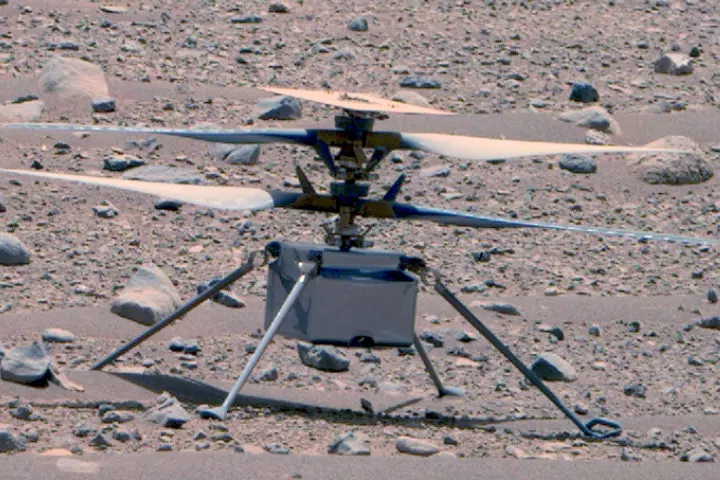perseverance
-
NASA's Perseverance Rover might have made serious headway in its mission to find signs of ancient life on the planet. It's stumbled upon a rock with colorful spots on it, which may have been left behind by microbial life billions of years ago.
-
Future space helicopters may benefit as NASA completes history's first interplanetary aircraft crash inquiry. The yet-to-be-released technical report explains why the space agency's Ingenuity Mars helicopter crashed on January 18, 2024.
-
NASA has declared the end of its Ingenuity Mars helicopter mission. Originally scheduled to last a month with five flights, it lasted for three years with 72 flights before being grounded by damaged rotors after its last flight.
-
In anticipation of one of history's most ambitious planetary missions, NASA has successfully tested the two solid rocket motors that will be used to help return the first geological samples from Mars to Earth for laboratory analysis.
-
As far as landscapes go, Mars is pretty dull – it’s mostly just rocks and craters. But now the Perseverance rover has spotted a couple of particularly weird rocks that have been hollowed out in eerie shapes.
-
After over two months of silence, NASA has been able to reestablish contact with its wayward Ingenuity robotic helicopter on Mars after radio transmissions were blocked by a hill. This marks what is now the official end of flight 52.
-
The first aircraft to fly on another planet has hit a new milestone. NASA’s Ingenuity Mars Helicopter has recently clocked up its 50th flight, and achieved a new altitude record in the process.
-
It may look like a lightsaber sitting on the surface of Mars, but this titanium tube is a sample canister dropped off by Perseverance. This could eventually be the first pristine sample of Martian soil and rock returned to Earth in a future mission.
-
Dust devils are a common occurrence on Mars, but Perseverance has now captured one from up close for the first time. The NASA rover recorded video from right inside the dust devil, as well as the first audio of the phenomenon on the Red Planet.
-
Ever since taking off on its historic first flight last year, NASA’s Ingenuity helicopter has been single-handedly raising the bar for the Red Planet’s aviation scene, and has now soared to its greatest heights yet.
-
Humans might not be the first lifeforms to face self-induced climate change. A new model suggests Mars was once habitable enough to support microbes, and they may have wiped themselves out by causing irreparable damage to the Red Planet’s atmosphere.
-
NASA’s Perseverance rover has captured some incredible imagery since landing on the Red Planet early last year, but none as detailed as its latest effort, a stunning mosaic made up of more than 1,000 separate images.
Load More











